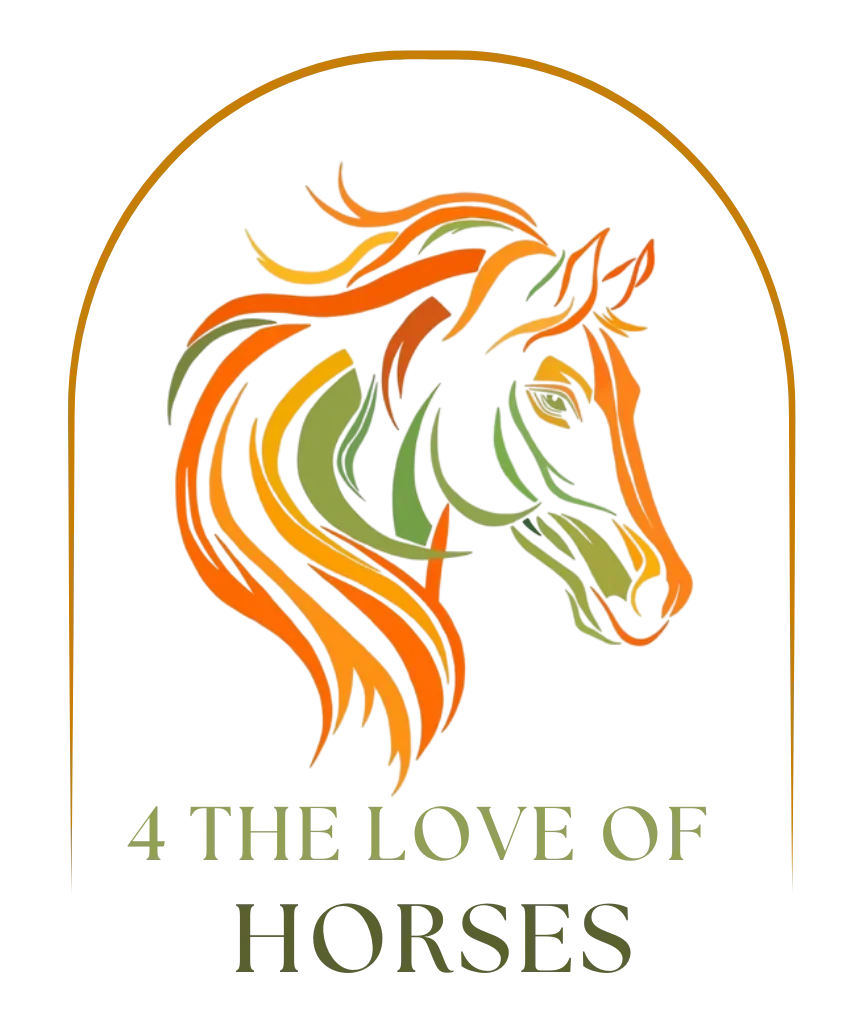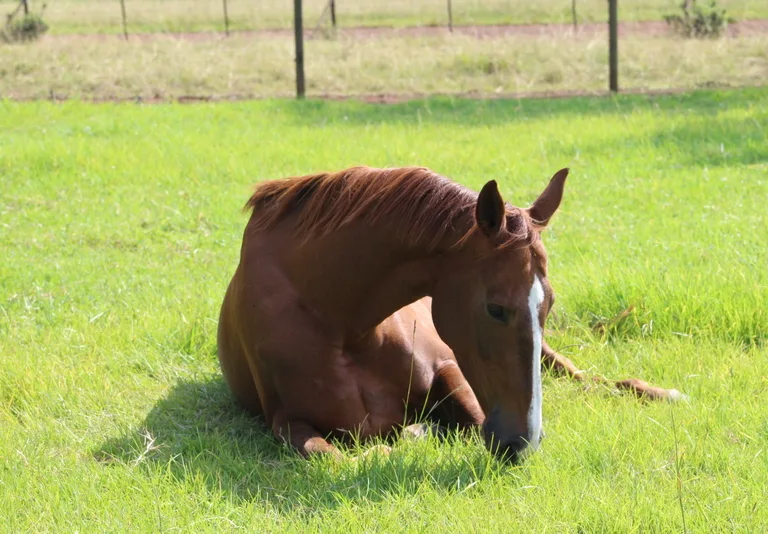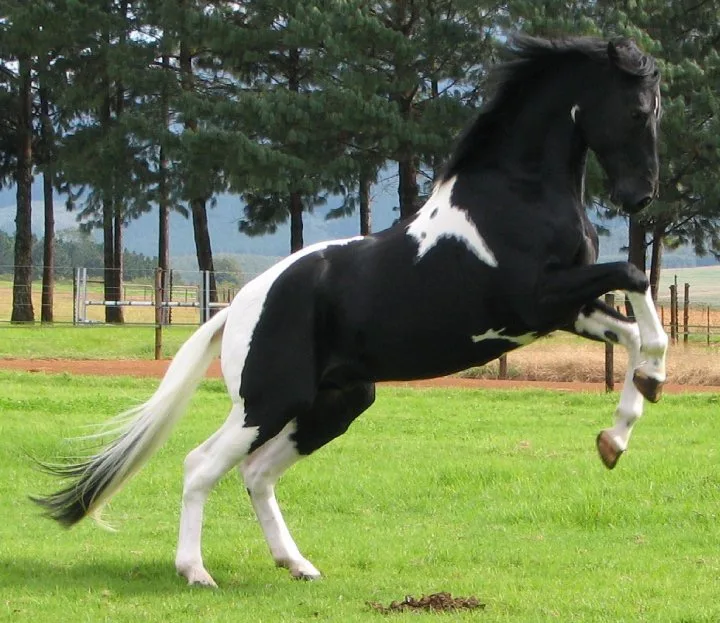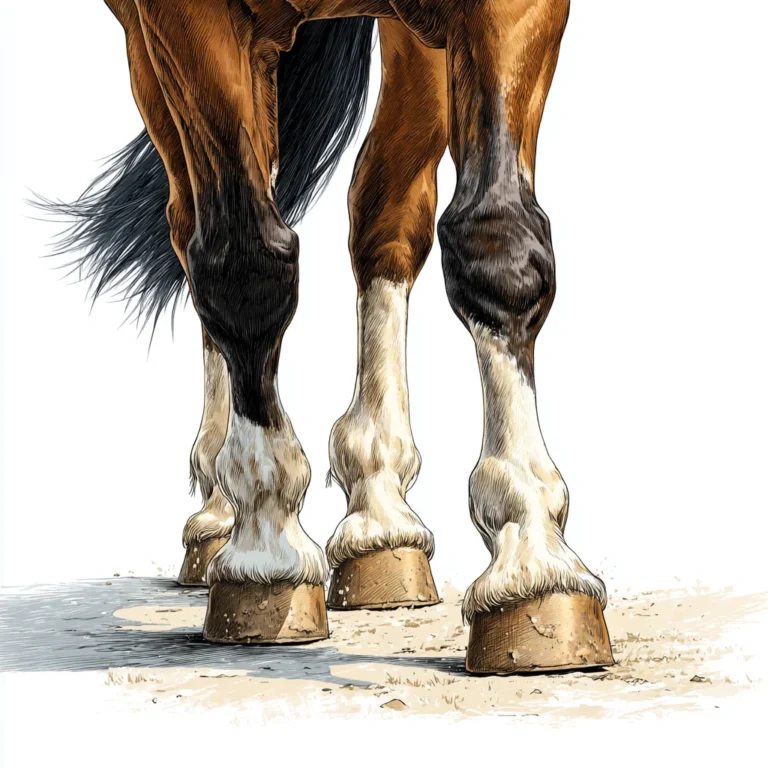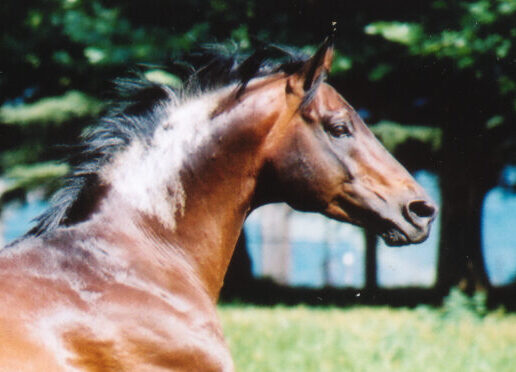Understanding Hay Analysis Reports: A Complete Guide
For most horse owners, hay represents the foundation of their horse’s diet—often making up 50-100% of their daily forage intake. Yet despite this critical importance, many of us make hay purchasing decisions based solely on visual appearance, smell, and price per ton. While these factors certainly matter, they only tell part of the story about what’s actually in that bale.
A hay analysis report is like a nutritional roadmap that reveals the true quality and content of your forage. These detailed laboratory tests provide precise measurements of protein levels, energy content, mineral composition, and fiber quality—information that’s impossible to determine just by looking at or handling the hay. Think of it as getting a complete blood panel for your horse’s most important food source.
The benefits of understanding hay analysis extend far beyond simply knowing what you’re feeding. Armed with accurate nutritional data, you can make informed decisions about supplementation, potentially saving hundreds of dollars by avoiding unnecessary feed additives. You’ll be able to match your hay’s nutritional profile to your horse’s specific needs—whether that’s a hard-working performance horse requiring high energy content or an easy keeper who needs lower-calorie forage to maintain a healthy weight.
Perhaps most importantly, hay analysis helps prevent nutritional imbalances that can lead to serious health issues. Calcium-phosphorus imbalances, excessive iron levels, or inadequate protein can all impact your horse’s wellbeing, performance, and long-term health in ways that aren’t immediately obvious.
Whether you’re buying hay by the truckload for a large operation or purchasing a few tons for backyard horses, knowing when to test hay and how to interpret those results will transform you from a reactive hay buyer into a proactive nutrition manager. The small investment in testing often pays for itself many times over through better horse health, more efficient feeding programs, and confident purchasing decisions.
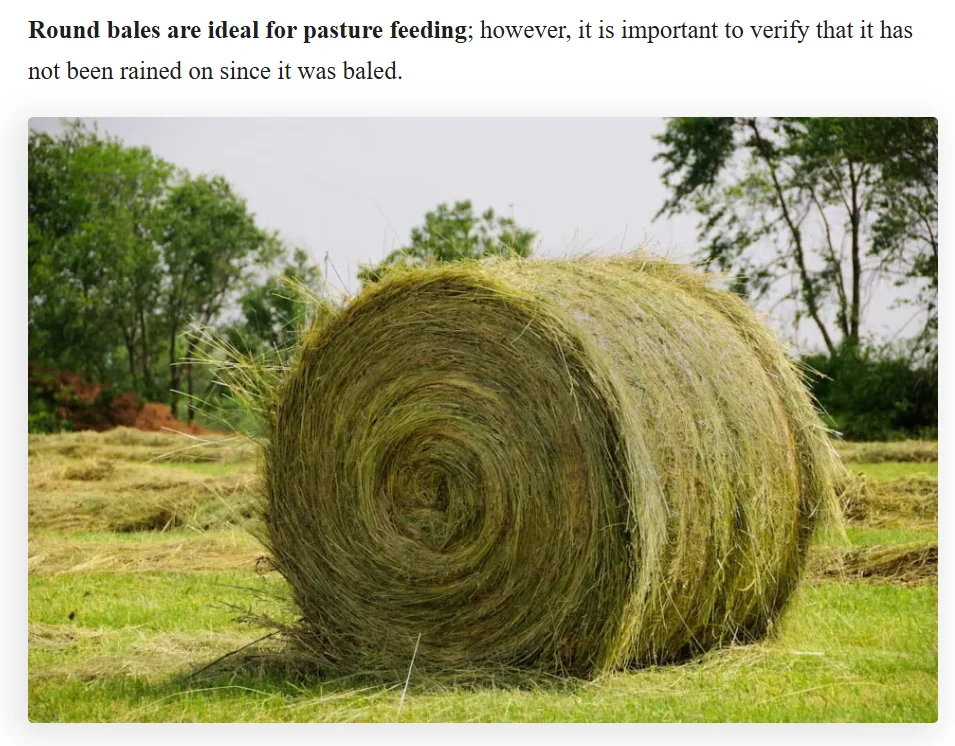
To understand how to analyse the hay you buy to make sure you are feeding your horse the best hay available download the free guide to how to analyse your hay below
Getting Started: When and How to Sample Hay
Knowing when to test your hay is just as important as understanding the results. The most valuable time to analyze hay is before you commit to a large purchase—whether that’s directly from a grower or through a feed dealer. Testing a few representative bales can save you from buying tons of hay that doesn’t meet your horses’ nutritional needs. However, many horse owners also find value in testing hay they already own, especially when planning feeding programs or troubleshooting health issues.
Consider testing when you’re dealing with a new supplier, when hay looks different from previous batches, or when you’re feeding horses with specific nutritional requirements like growing foals, broodmares, or performance horses. If your horses aren’t maintaining condition as expected, or if you’re spending heavily on supplements, a hay analysis might reveal that your forage is either deficient in key nutrients or so rich that you’re overfeeding.
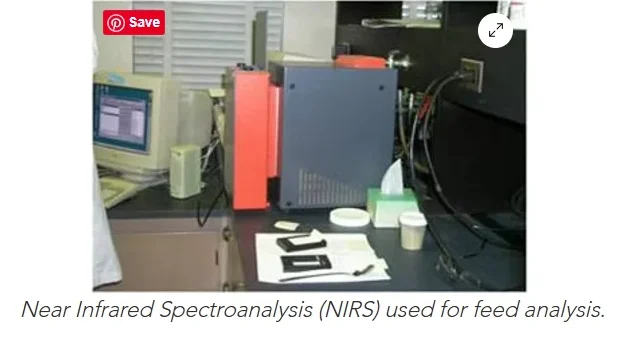
Collecting Representative Samples
The accuracy of your hay analysis depends entirely on how well your sample represents the entire batch. Poor sampling is the most common reason for misleading results, so it’s worth taking time to do this correctly.
For square bales, you’ll need a hay probe or coring tool—a long, hollow tube with sharp cutting edges that extracts a core sample from the bale. Avoid using a knife or pulling samples from broken bales, as these methods typically give you only the outer layers, which can be quite different nutritionally from the interior. Take samples from at least 12-15 bales randomly selected throughout the lot, inserting the probe into the side of each bale to its full depth.
Round bales require a different approach since they’re more densely packed. You’ll need a heavy-duty probe designed for round bales, and you should sample from multiple bales across the batch. Insert the probe from the curved side, not the flat ends, and aim for the center of the bale.
Combine all your individual samples into one composite sample of about two pounds, mix thoroughly, and place in a clean plastic bag or container provided by the testing laboratory. Label clearly with the date, hay type, and cutting number if known.
Where to Send Samples
Most states have agricultural extension services that offer hay testing, typically providing the most cost-effective option for basic nutritional analysis. Many feed companies and private laboratories also offer testing services, often with faster turnaround times and more comprehensive panels.
When choosing a lab, consider what type of analysis you need. A basic test covering protein, fiber, and energy values typically costs $25-40, while more comprehensive panels including full mineral analysis can range from $50-100. Some labs offer specialized tests for mycotoxins or nitrates if you have specific concerns.
Timing and Logistics
Ship samples early in the week to avoid weekend delays, and use expedited shipping if possible—especially in hot weather. Most labs provide results within 7-10 business days, though some offer rush services for an additional fee.
Remember that hay continues to change slightly during storage, so ideally test hay that’s been cured and stored for at least 30-60 days for the most accurate representation of what you’ll actually be feeding throughout the storage period.
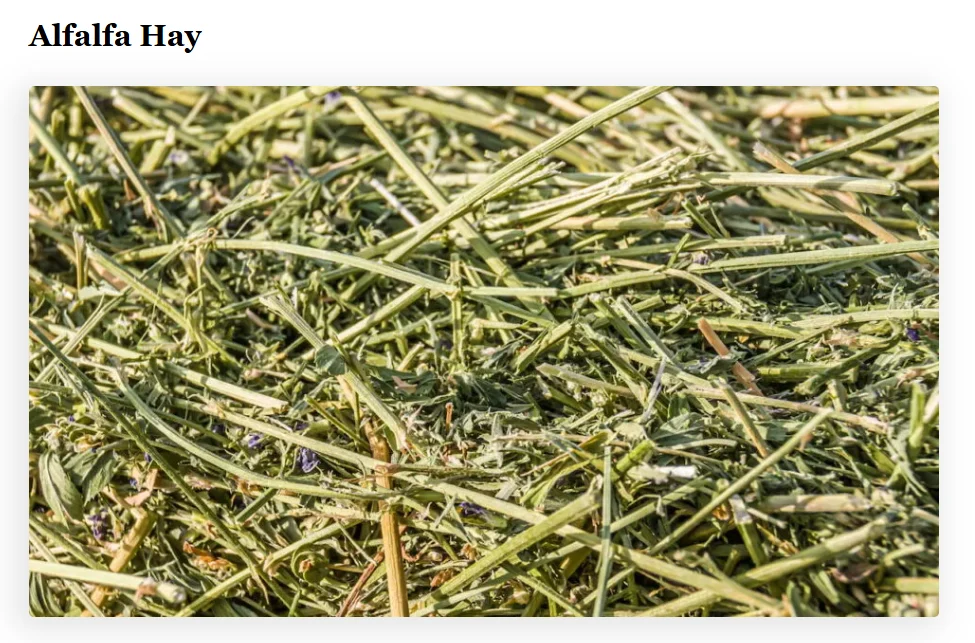
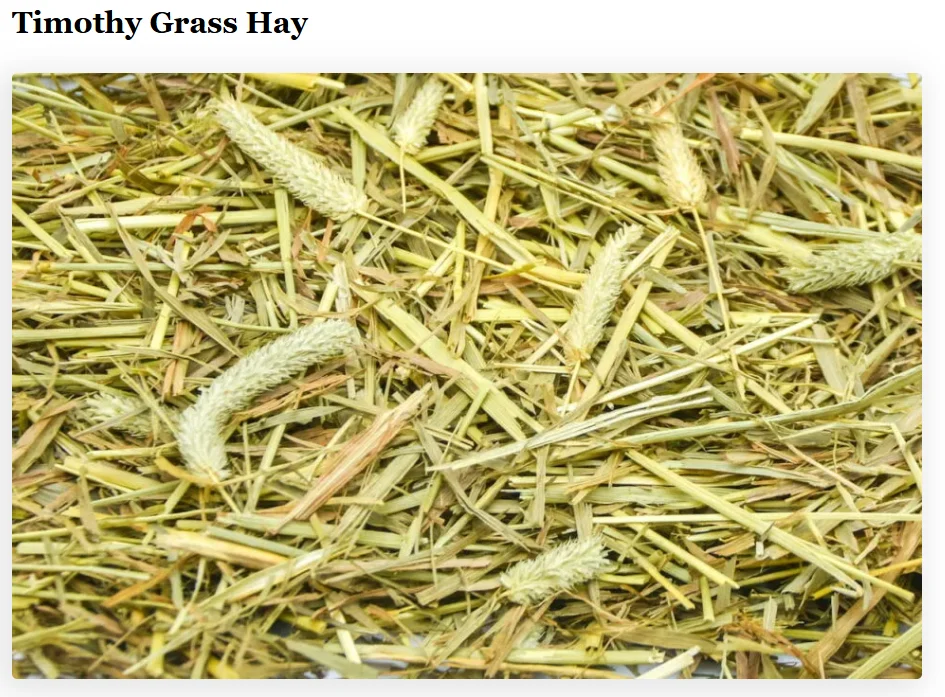
Essential Nutritional Components Explained
Understanding the key numbers on your hay analysis report is crucial for making informed feeding decisions. While these reports can look intimidating at first glance, focusing on a few essential components will give you the information you need to evaluate your hay’s nutritional value.
Moisture Content
Moisture content appears as a percentage and is your first indicator of hay quality and storage safety. Properly cured hay should contain 15-18% moisture or less. Numbers above 20% signal potential problems—hay with excessive moisture is prone to mold growth, heating, and spoilage that can make it unpalatable or even dangerous for horses.
Beyond safety concerns, moisture content affects the nutritional density of your hay. Hay with higher moisture content provides less nutrition per pound since you’re essentially paying for water weight. When comparing costs between different hay sources, factor in moisture levels to calculate the true value per pound of dry matter.
If your hay tests above 18% moisture, monitor it closely for signs of heating or mold, and consider using it first while seeking drier hay for long-term storage. Conversely, extremely dry hay (below 10% moisture) can be dusty and less palatable, though it’s nutritionally sound.
Crude Protein (CP)
Crude protein, expressed as a percentage, tells you how much protein your hay provides. However, understanding what these numbers mean for your specific horses is more important than simply looking for the highest percentage.
Mature horses at maintenance typically need hay with 8-10% crude protein, while growing horses, lactating mares, and horses in heavy work may require 12-14% or higher. Good quality grass hay often ranges from 6-12% protein, while legume hays like alfalfa commonly test between 15-22%.
Remember that protein quality matters as much as quantity. The crude protein measurement doesn’t distinguish between high-quality, easily digestible proteins and lower-quality options. However, legume hays and high-quality grass hays generally provide better protein profiles than overmature or weather-damaged forage.
If your hay is significantly below your horses’ protein requirements, you’ll need to supplement with higher-protein feeds. Conversely, if your hay is much higher in protein than needed, you might be able to reduce or eliminate protein supplements, potentially saving money on your feeding program.
Energy Values
Energy content determines how well your hay will maintain your horses’ weight and fuel their activity. Two key measurements appear on most reports: Digestible Energy (DE) and Total Digestible Nutrients (TDN).
Digestible Energy, measured in megacalories per pound (Mcal/lb), represents the usable energy your horse can extract from the hay. Average quality grass hay typically provides 0.8-0.9 Mcal/lb, while premium hays can reach 0.95-1.0 Mcal/lb or higher. Legume hays often provide 0.9-1.1 Mcal/lb.
To put these numbers in perspective, a 1,000-pound horse at maintenance needs approximately 16-18 Mcal of digestible energy daily. If your hay provides 0.85 Mcal/lb, you’d need to feed roughly 20-22 pounds daily to meet energy requirements through hay alone.
Total Digestible Nutrients (TDN), expressed as a percentage, provides another way to evaluate energy content. TDN values above 60% indicate high energy hay, while values below 50% suggest lower energy forage that might require supplementation for horses with higher energy needs.
Fiber Analysis
Fiber content affects both digestibility and how well your hay satisfies your horses’ psychological need to chew. Two fiber measurements appear on most reports: Acid Detergent Fiber (ADF) and Neutral Detergent Fiber (NDF).
ADF represents the less digestible fiber components—primarily cellulose and lignin. Lower ADF values indicate more digestible hay, with good quality hay typically showing ADF levels below 35-40%. Higher ADF values mean less digestible energy and lower overall feed value.
NDF measures total fiber content and affects how much hay horses can physically consume. High NDF values (above 60-65%) can limit intake since horses’ stomachs can only hold so much fibrous material. This becomes particularly important for horses with high energy needs who must consume large quantities of forage.
The relationship between these fiber measurements and your hay’s energy content is inverse—as fiber increases, digestible energy typically decreases. Understanding this relationship helps explain why some hays fill horses up without providing adequate nutrition, while others deliver more energy per pound consumed.
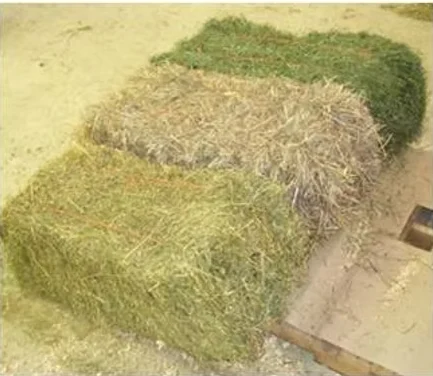
Mineral Content Analysis
The mineral profile of your hay often reveals information that’s impossible to detect through visual inspection alone, yet these nutrients play critical roles in your horse’s health, performance, and long-term wellbeing. Understanding mineral content helps you make informed supplementation decisions and avoid potentially dangerous imbalances.
Essential Macrominerals
Calcium and Phosphorus form the foundation of your horse’s skeletal system and appear prominently on most hay analysis reports. These minerals work together, making their ratio just as important as their individual levels. The ideal calcium-to-phosphorus ratio ranges from 1.5:1 to 3:1, with 2:1 being optimal for most horses.
Grass hays typically provide moderate calcium levels (0.3-0.6%) and lower phosphorus (0.2-0.4%), while legume hays like alfalfa are naturally rich in calcium (1.2-1.8%) with moderate phosphorus levels. Problems arise when this ratio becomes inverted—when phosphorus exceeds calcium—which can interfere with calcium absorption and potentially lead to developmental orthopedic diseases in young horses.
Magnesium supports muscle and nerve function, and deficiencies can contribute to nervousness, muscle tremors, or poor performance. Most hays provide adequate magnesium (0.15-0.25%), though horses under stress, in heavy work, or on high-grain diets may need supplementation regardless of hay levels.
Potassium rarely appears deficient in hay-based diets since most forages are naturally rich in this mineral (1.5-3.0%). However, horses losing significant electrolytes through sweat may need additional potassium supplementation during intense work or hot weather.
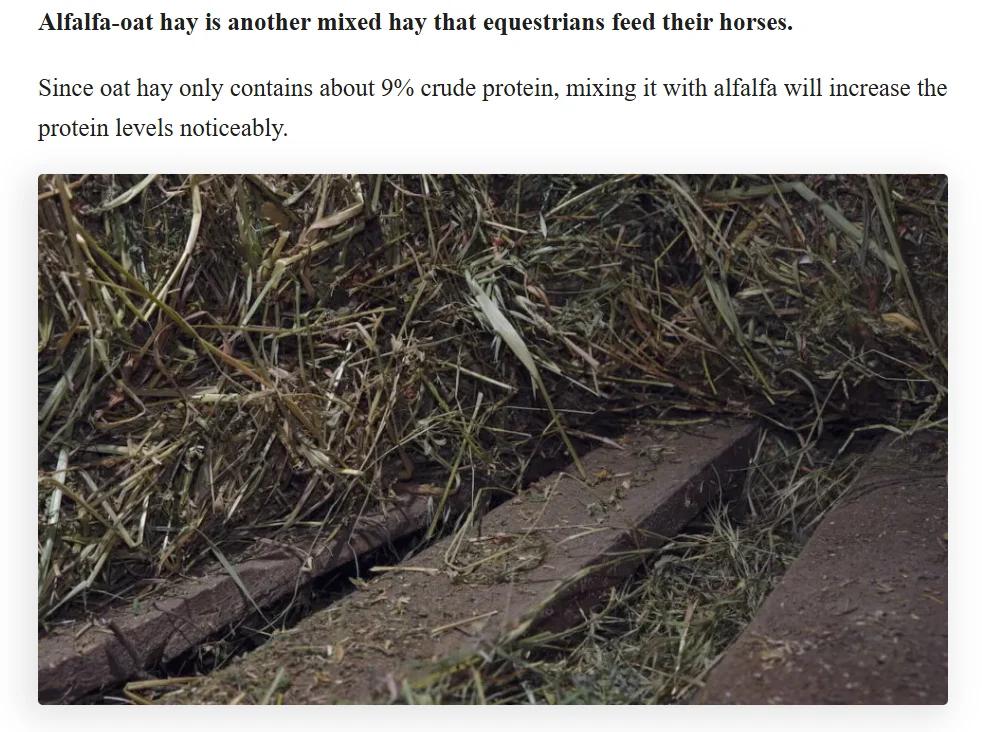
Important Trace Minerals
Iron levels in hay often surprise horse owners because they’re typically much higher than horses actually need. While horses only require about 50 parts per million (ppm) of iron in their total diet, many hays contain 100-500 ppm or more. Excessive iron can interfere with copper and zinc absorption, so high-iron hays may require careful mineral balancing in the supplement program.
Copper and Zinc work together in numerous metabolic processes, supporting everything from coat quality to immune function to hoof health. Most hays are naturally low in these minerals (copper: 5-15 ppm, zinc: 15-40 ppm), while horses need 10-15 ppm copper and 40-50 ppm zinc in their total diet. This means virtually all hay-based diets require copper and zinc supplementation.
The copper-to-zinc ratio should ideally fall between 1:3 and 1:4. Imbalances in either direction can interfere with the absorption and utilization of both minerals.
Selenium varies dramatically by geographic region, with some areas producing hay that’s deficient while others may have excessive levels. Selenium works closely with vitamin E as an antioxidant, and deficiencies can contribute to muscle problems, poor immune function, and reproductive issues. However, selenium toxicity is also possible, making regional awareness important.
Interpreting Mineral Results
When reviewing mineral analysis, consider your horses’ total diet rather than focusing solely on hay values. Horses consuming significant amounts of grain, commercial feeds, or supplements may already receive adequate minerals even if hay levels appear low.
Conversely, horses on hay-only diets almost certainly need mineral supplementation to meet requirements for copper, zinc, and often selenium. The key is balancing the mineral profile of your entire feeding program rather than trying to meet all requirements through hay alone.
Pay particular attention to minerals that can become excessive, particularly iron and sometimes calcium in all-legume diets. These excesses can create secondary deficiencies by interfering with the absorption of other essential minerals.
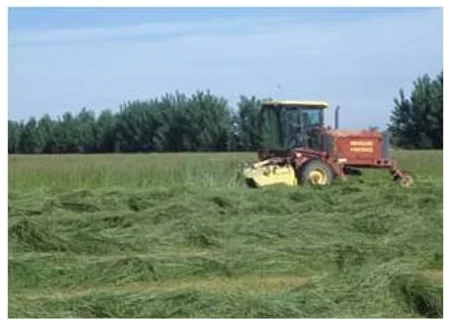
Geographic Considerations
Soil mineral content directly affects hay mineral levels, and these vary significantly by region. Coastal areas often produce hay higher in sodium but potentially lower in selenium, while areas with heavy clay soils might yield hay with higher iron levels. Understanding your local soil characteristics helps predict what mineral adjustments your feeding program might need.
Many extension services provide regional hay analysis summaries that can give you baseline expectations for mineral content in your area. This information proves invaluable when evaluating whether your hay analysis results are typical for your region or represent an unusual batch requiring special attention.
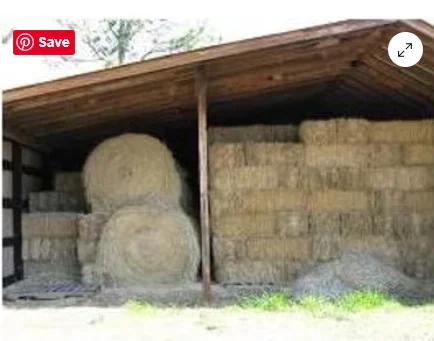
Interpreting Quality Indicators
Beyond individual nutritional components, hay analysis reports often include calculated quality indices that help you quickly assess overall forage value and compare different hay sources. These standardized measurements translate complex nutritional data into practical quality rankings.
Relative Feed Value (RFV) and Relative Forage Quality (RFQ)
Relative Feed Value (RFV) has been the traditional benchmark for hay quality, with a baseline value of 100 representing average quality hay. The calculation considers both digestibility (based on ADF levels) and intake potential (based on NDF levels) to produce a single quality score.
RFV scores above 150 indicate premium quality hay suitable for high-producing dairy cows or horses with demanding nutritional needs. Scores of 125-150 represent good quality hay appropriate for most performance horses, while scores of 100-125 indicate average hay suitable for maintenance horses. Values below 100 suggest lower quality hay that may require supplementation for most horses.
Relative Forage Quality (RFQ) represents a more recent and sophisticated quality measurement that considers additional factors beyond fiber content. RFQ calculations include lignin content and provide more accurate predictions of animal performance, making it particularly valuable for evaluating hay for high-performance horses.
RFQ values follow a similar scale to RFV, but typically run 10-20 points higher for the same hay. Premium hay might score 160-180 RFQ, while good quality hay ranges from 130-160. The advantage of RFQ is its better correlation with actual animal performance, especially for high-quality forages.
Understanding Quality Classifications
Most hay analysis reports assign grade classifications—Prime, Premium, Good, Fair, or Utility—based on these calculated indices. However, understanding what these grades mean for your specific horses is more important than simply seeking the highest grade.
Prime or Premium grades indicate exceptional hay with high digestibility, energy content, and palatability. While excellent for performance horses, broodmares, or growing horses, this quality level may provide more nutrition than needed for easy keepers or horses at maintenance, potentially leading to unwanted weight gain.
Good grade hay offers solid nutrition for most horses and often represents the best value for general-purpose feeding. This quality level typically meets or exceeds the nutritional needs of most pleasure horses, trail horses, and mature horses in light to moderate work.
Fair grade hay can still be appropriate for certain situations—mature horses at maintenance, horses needing weight restriction, or as part of a feeding program that includes grain or commercial feeds to balance nutrition.
Visual Quality vs. Nutritional Quality
One of the most important concepts in hay evaluation is understanding that visual appearance doesn’t always correlate with nutritional quality. Hay that looks beautiful—green, leafy, and well-cured—usually does provide good nutrition, but exceptions exist.
Late-cut grass hay might appear coarse and stemmy yet still provide adequate nutrition for many horses, while early-cut hay that suffered weather damage during curing might look poor but retain much of its nutritional value. Conversely, hay that looks excellent but was cut at full maturity might be low in protein and energy despite its attractive appearance.
Color can be particularly misleading. Sun-bleached hay often appears lower quality than it actually is, while hay that retained its green color might have been baled with higher moisture content that led to heating and nutrient loss.
Palatability Considerations
Quality indices don’t measure palatability—how readily horses will eat the hay. Some horses prefer stemmy, mature hay over leafy, high-quality forage, while others become finicky about anything less than premium quality.
Palatability becomes especially important when dealing with horses that need to maintain or gain weight. The highest quality hay won’t help if your horse won’t eat enough of it. Sometimes a slightly lower grade hay that horses consume enthusiastically provides better results than premium hay they pick through reluctantly.
Cost-Effectiveness Analysis
Quality indices help you evaluate true value when comparing hay prices. Premium hay at $300 per ton might actually cost less per unit of nutrition than good hay at $200 per ton, especially when you factor in reduced supplementation needs.
Calculate cost per unit of protein or energy rather than simply comparing price per ton. High RFV or RFQ hay often allows you to feed less total hay while meeting nutritional requirements, effectively reducing your cost per horse per day even if the initial price per ton appears higher.
Quality measurements also help predict how much commercial feed or supplements you’ll need. Lower quality hay typically requires more supplementation to balance the diet, while premium hay might meet most nutritional needs with minimal additional feeding.
Red Flags: What to Watch For
While most hay analysis results fall within acceptable ranges, certain values should immediately grab your attention as they can indicate serious health risks or significant nutritional problems. Recognizing these red flags helps you make quick decisions about whether hay is safe to feed and when to seek additional testing or expert advice.
Dangerous Nitrate Levels
Nitrate content represents one of the most serious safety concerns in hay analysis. Nitrates convert to nitrites in the horse’s digestive system, which can interfere with oxygen transport in the blood, potentially causing nitrate poisoning.
Safe nitrate levels in hay should remain below 0.5% (5,000 ppm) on a dry matter basis. Levels between 0.5-1.0% warrant caution and careful monitoring, while anything above 1.0% should be considered potentially dangerous. Nitrate levels above 1.5% can be lethal and make hay unsuitable for horse consumption.
High nitrate levels typically result from drought stress, excessive nitrogen fertilization, or certain weather patterns during growing seasons. Crops harvested during or immediately after drought conditions are particularly susceptible. If your hay tests high in nitrates, don’t assume it will decrease over time—nitrate levels remain stable during storage.
Mycotoxin Concerns
While not included in standard hay analysis, mycotoxin testing becomes crucial if you notice signs of mold, unusual odors, or if horses show unexplained health issues. Common mycotoxins in hay include aflatoxins, fumonisin, and zearalenone, each presenting different health risks.
Visual indicators that warrant mycotoxin testing include obvious mold growth, musty or sour odors, white dust when handling bales, or hay that appears blackened or discolored in patches. However, dangerous mycotoxin levels can exist in hay that appears normal, making testing the only reliable detection method.
Horses consuming mycotoxin-contaminated hay may show symptoms ranging from poor appetite and reduced performance to serious liver damage or reproductive problems. If multiple horses in your operation show similar unexplained health issues, consider mycotoxin testing as part of your diagnostic process.
Extremely High or Low Protein Levels
Protein levels outside normal ranges often signal underlying problems with the hay. Crude protein below 6% in grass hay or below 12% in legume hay suggests hay that was cut too late, suffered significant weather damage, or came from nutrient-poor soils.
Conversely, extremely high protein levels (above 20% in grass hay or above 25% in legume hays) might indicate hay that was heavily fertilized with nitrogen or harvested from fields with high soil nitrogen levels. While not immediately dangerous, such hay can be wasteful and expensive to feed, as horses will simply excrete excess protein.
Very low protein hay fails to meet even maintenance requirements for most horses, necessitating significant supplementation. Very high protein hay might provide more nutrition than needed while contributing to higher feed costs and increased nitrogen excretion.
Poor Mineral Balances
Inverted calcium-phosphorus ratios—where phosphorus exceeds calcium—represent a serious nutritional red flag. This imbalance can interfere with calcium absorption and contribute to developmental orthopedic diseases in young horses or metabolic problems in mature horses.
Extremely high iron levels (above 500 ppm) can interfere with copper and zinc absorption, potentially leading to deficiencies in these essential minerals even if you’re providing supplementation. High iron levels are particularly common in hay grown on certain soil types or in areas with iron-rich groundwater.
Very low selenium levels combined with regional knowledge of selenium-deficient soils should prompt immediate attention to selenium supplementation. Conversely, hay from selenium-rich areas might contain excessive levels that require dietary management.
Fiber Content Extremes
ADF levels above 45% or NDF levels above 70% indicate hay with very poor digestibility that may not meet energy requirements even for horses at maintenance. Such hay might fill horses up without providing adequate nutrition, leading to weight loss despite apparently adequate consumption.
Extremely low fiber levels (ADF below 25%, NDF below 40%) in grass hay might indicate hay that was cut very early or contains significant amounts of grain contamination. While potentially high in energy, such hay might not provide adequate fiber for proper digestive health.
Energy Content Concerns
Digestible energy below 0.75 Mcal/lb suggests hay that may struggle to meet even maintenance energy requirements without supplementation. Horses consuming such hay often require significant grain or commercial feed additions to maintain proper body condition.
Unusually high energy content (above 1.1 Mcal/lb in grass hay) might indicate hay mixed with grain or harvested at an unusually immature stage. While not dangerous, this requires careful feeding management to prevent excessive weight gain in easy keepers.
When to Seek Additional Testing
If your hay analysis reveals any of these red flags, consider additional testing to confirm results or investigate specific concerns. Nitrate levels warrant immediate retesting with a different sample to confirm accuracy. Suspected mycotoxin issues require specialized testing beyond standard nutritional analysis.
When in doubt, consult with your veterinarian or an equine nutritionist who can help interpret concerning results and recommend appropriate feeding strategies or alternative hay sources. The cost of additional testing or expert consultation is minimal compared to potential health problems from feeding inappropriate hay.
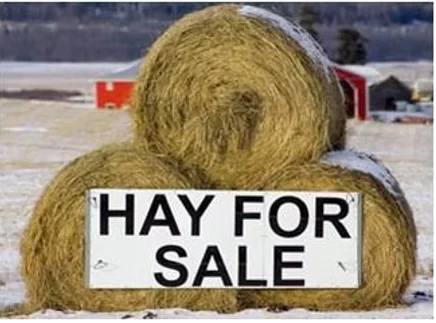
Practical Application
Understanding your hay analysis numbers is only valuable if you can translate that information into real-world feeding decisions. This section bridges the gap between laboratory data and daily horse management, helping you match your hay’s nutritional profile to your horses’ specific needs.
Matching Hay Analysis to Horse Needs
Maintenance horses—those not in work, not pregnant, and not growing—have the most flexible nutritional requirements. Hay providing 8-10% crude protein and 0.8-0.9 Mcal/lb digestible energy typically meets their needs. If your hay analysis shows these levels or higher, you can likely feed hay alone or with minimal supplementation.
Performance horses require more careful matching of hay quality to workload intensity. Light work horses might thrive on the same hay suitable for maintenance animals, but horses in moderate to heavy work often need hay providing 10-12% protein and 0.9-1.0 Mcal/lb or higher. If your hay falls short of these targets, you’ll need to supplement with grain or commercial feeds.
Growing horses present unique challenges because their nutritional needs are both high and changing rapidly. Weanlings and yearlings typically need hay with 12-14% protein and high energy content (0.95+ Mcal/lb). However, the calcium-phosphorus ratio becomes critical for young horses—aim for 1.8:1 to 2.5:1 to support proper skeletal development.
Broodmares have varying needs depending on their stage of reproduction. Early pregnancy resembles maintenance requirements, but lactating mares need nutrition similar to performance horses—high protein (12-15%), high energy (0.9-1.1 Mcal/lb), and excellent mineral balance. Premium quality hay often provides the foundation for successful broodmare nutrition.
Calculating Daily Ration Requirements
Converting hay analysis data into feeding amounts requires understanding your horses’ daily nutritional needs and your hay’s nutrient density. A 1,000-pound horse at maintenance typically needs 16-18 Mcal of digestible energy and 1.3-1.5 pounds of crude protein daily.
If your hay analysis shows 0.85 Mcal/lb digestible energy and 9% crude protein, you can calculate feeding amounts. For energy: 17 Mcal ÷ 0.85 Mcal/lb = 20 pounds of hay needed daily. For protein: 1.4 pounds needed ÷ 0.09 = 15.6 pounds of hay required daily. Since the energy requirement demands more hay, you’d feed approximately 20 pounds daily, which would provide adequate protein as well.
This calculation assumes horses will consume the amount offered, which isn’t always realistic. Most horses consume 1.5-2.5% of their body weight in forage daily, meaning our 1,000-pound horse will likely eat 15-25 pounds of hay. If your calculations suggest feeding amounts outside this range, you’ll need to adjust with grain or commercial feeds.
Balancing Multiple Hay Sources
Many horse operations use multiple hay types—perhaps grass hay for daily feeding and alfalfa for horses needing extra nutrition. When working with mixed hay sources, calculate the combined nutritional profile based on proportional feeding amounts.
For example, if you’re feeding 70% grass hay (10% protein, 0.80 Mcal/lb) and 30% alfalfa (18% protein, 1.00 Mcal/lb), your combined profile would be approximately 12.4% protein and 0.86 Mcal/lb. This approach allows you to customize nutrition for individual horses while managing inventory efficiently.
When mixing hay types, maintain consistent ratios to avoid digestive upset from frequent diet changes. Introduce new hay gradually over 7-10 days, even when analysis suggests both sources are of similar quality.
Working with Your Veterinarian or Equine Nutritionist
Complex feeding situations benefit from professional guidance. Share your hay analysis results with your veterinarian during routine health visits, especially if you’re managing horses with special needs like metabolic disorders, performance demands, or breeding operations.
An equine nutritionist can help design complete feeding programs that account for hay analysis results, regional mineral deficiencies, individual horse requirements, and your management preferences. They can also suggest cost-effective supplementation strategies that complement your hay’s nutritional profile rather than duplicating nutrients already present in adequate amounts.
Professional consultation becomes particularly valuable when dealing with problem horses—poor doers, horses with dietary restrictions, or animals showing unexplained performance or health issues. Sometimes the solution lies in better matching hay quality to individual needs rather than adding more supplements.
Seasonal Feeding Adjustments
Hay nutritional content can vary between cuttings from the same field, making it worthwhile to test representative samples from each major hay purchase. First cutting typically provides higher fiber content and lower protein, while later cuttings often show higher protein and energy levels.
Plan feeding adjustments around these variations. Horses maintaining weight well on second-cutting hay might need grain supplementation when switched to first-cutting hay with lower energy content. Conversely, easy keepers thriving on mature grass hay might gain unwanted weight if switched to premium alfalfa without adjusting total intake.
Weather conditions during harvest also affect nutritional content. Rain-damaged hay often shows reduced energy and protein levels compared to hay from the same field harvested under ideal conditions. Your hay analysis reveals these differences, allowing you to adjust feeding programs accordingly rather than wondering why horses aren’t maintaining condition as expected.
Record Keeping and Tracking Results
Maintain records of hay analysis results alongside feeding observations and horse performance data. This information helps identify patterns between hay quality and horse condition, performance, or health issues. Over time, you’ll develop a clear understanding of what hay specifications work best for your specific horses and management situation.
Document which hay sources consistently provide good analysis results and horse performance. This information proves invaluable when making future purchasing decisions, especially when dealing with new suppliers or evaluating hay from unfamiliar growing regions.
Making Feed Decisions Based on Results
The true value of hay analysis emerges when you use the data to make informed purchasing and feeding decisions. This process involves looking beyond the initial price per ton to evaluate the actual nutritional value and total cost of feeding, helping you optimize both horse health and budget efficiency.
Cost Per Unit of Nutrition vs. Price Per Ton
Traditional hay buying focuses on price per ton, but this approach often leads to poor value decisions. A more accurate evaluation considers cost per unit of nutrition—essentially what you’re paying for digestible energy, protein, or other nutrients your horses actually need.
Calculate the cost per megacalorie of digestible energy by dividing the hay price by the total megacalories per ton. For example, hay costing $250 per ton with 0.85 Mcal/lb provides 1,700 Mcal per ton (assuming 2,000 pounds), resulting in a cost of $0.147 per Mcal. Compare this to premium hay at $350 per ton providing 0.98 Mcal/lb (1,960 Mcal per ton), costing $0.179 per Mcal.
While the premium hay costs more per megacalorie, the difference may be justified by reduced supplementation needs, better palatability, or improved horse performance. The key is making this comparison consciously rather than defaulting to the cheapest price per ton.
Protein calculations work similarly. Hay at $200 per ton with 8% protein provides 320 pounds of crude protein per ton, costing $0.625 per pound of protein. Higher quality hay at $300 per ton with 12% protein provides 480 pounds of protein per ton at $0.625 per pound—the same protein cost despite the higher hay price.
When to Supplement vs. Find Different Hay
Your hay analysis results guide decisions about supplementation versus seeking different hay sources. If your current hay provides adequate energy but falls short on protein, targeted protein supplementation might be more cost-effective than purchasing entirely different hay.
Consider supplementation when hay meets most nutritional needs but falls short in specific areas. For instance, hay with good energy and protein levels but poor mineral balance might work well with appropriate mineral supplementation, especially if alternative hay sources are expensive or difficult to obtain.
However, if your hay analysis reveals multiple deficiencies—low energy, inadequate protein, and poor mineral content—finding better quality hay often proves more economical than extensive supplementation. Calculate the cost of bringing your current hay up to acceptable nutritional levels through supplements, then compare this total to the cost of better quality hay.
Geographic availability influences this decision significantly. In areas where premium hay is scarce or prohibitively expensive, supplementation becomes the practical choice. Conversely, regions with abundant high-quality hay make it economically sensible to purchase better forage rather than supplement extensively.
Long-term Feeding Program Planning
Use hay analysis data to plan feeding programs for entire seasons or years, rather than making reactive adjustments as problems arise. If you typically purchase hay in large quantities, understanding the nutritional profile allows you to plan complementary grain or supplement programs from the beginning.
Seasonal planning becomes particularly important in regions where hay quality varies significantly between cuttings or where availability changes throughout the year. Early season hay analysis helps you anticipate when supplementation needs might change and budget accordingly.
Consider storage and handling requirements when making long-term plans. Premium hay often requires more careful storage to maintain quality, while lower grade hay might be acceptable for certain horses but require more extensive supplementation programs.
Budgeting for Total Feed Costs
Hay analysis enables more accurate feed budget planning by revealing true nutritional costs. Factor in both hay costs and supplementation requirements when comparing different feeding strategies.
Create feeding cost comparisons that include hay, grain, supplements, and any additional feeds required to meet your horses’ needs. Sometimes expensive hay paired with minimal supplementation costs less per horse per day than cheap hay requiring extensive nutritional additions.
Don’t forget to factor in convenience and labor costs. Hay requiring complex supplementation programs demands more time and management attention than high-quality hay that meets most needs independently. For busy horse owners, the premium paid for better hay might be justified by simplified feeding routines.
Risk Management Considerations
Use hay analysis results to assess and manage feeding risks. Hay with borderline nutritional levels might work well during favorable conditions but fail to support horses adequately during stress, illness, or increased workload demands.
Consider having backup plans for nutritional shortfalls. If your primary hay source provides minimal margins above requirements, identify supplementation strategies or alternative hay sources before problems arise. This proactive approach prevents scrambling for solutions when horses begin losing condition or performance.
Weather-related risks also warrant consideration. Hay analysis helps you understand how much nutritional buffer exists in your current feeding program. Horses consuming hay that barely meets requirements have little reserve capacity if feed quality decreases or availability becomes limited.
Communicating with Hay Suppliers
Share hay analysis expectations with your suppliers to improve future purchases. Suppliers who understand your quality requirements can better match their products to your needs, potentially saving both parties time and money.
Some suppliers offer analysis results with their hay, making comparison shopping easier and more accurate. When working with new suppliers, request recent analysis data or ask about their willingness to provide representative samples for testing before committing to large purchases.
Establish quality specifications based on your analysis experience. Rather than simply requesting “good quality” hay, specify minimum protein levels, maximum ADF values, or other measurable criteria that align with your horses’ needs and your budget constraints.
Building relationships with suppliers who consistently provide hay meeting your specifications creates long-term value beyond individual transactions. These relationships often provide access to the best hay lots and advance notice of availability, helping ensure consistent nutrition for your horses throughout the year.
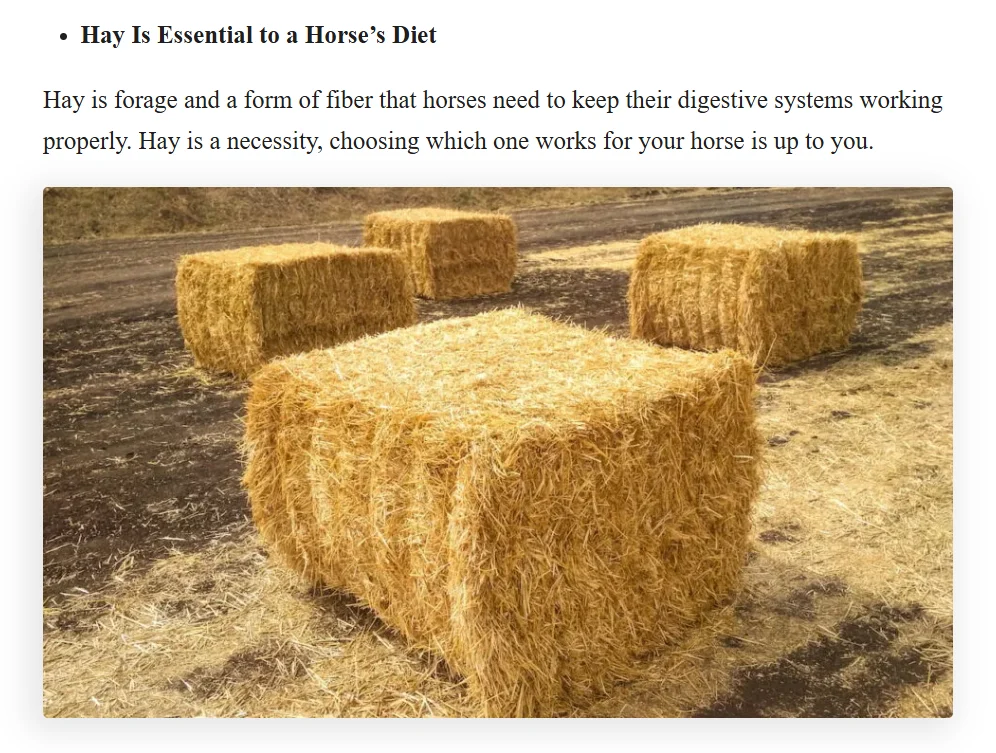
Conclusion
Understanding hay analysis reports transforms you from a reactive hay buyer into a proactive nutrition manager, equipped with the knowledge to make informed decisions that benefit both your horses’ health and your budget. The journey from looking at confusing laboratory numbers to confidently interpreting nutritional data represents one of the most valuable skills any horse owner can develop.
Key Takeaways for Horse Owners
The foundation of successful hay analysis interpretation lies in understanding that numbers on a report are tools for decision-making, not absolute measures of hay quality. A hay sample testing at 8% protein isn’t automatically “bad”—it might be perfect for your easy keeper who needs calorie restriction, while inadequate for your lactating broodmare. Context matters more than individual values.
Remember that hay analysis provides a snapshot of nutritional content, but feeding success depends on how well you match that nutrition to your horses’ specific needs. The most expensive, highest-testing hay in your area won’t benefit horses that won’t eat it or easy keepers who gain unwanted weight on premium forage.
Cost-effectiveness emerges from understanding total feeding costs rather than focusing solely on hay price per ton. Cheap hay requiring extensive supplementation often costs more per horse per day than premium hay that meets nutritional needs with minimal additions. Calculate nutrition costs, not just hay costs, to make truly informed purchasing decisions.
Safety considerations should always override economic factors. Hay with dangerous nitrate levels or other red flag indicators isn’t worth any price, regardless of how attractive the cost per ton might appear. When in doubt, seek additional testing or professional guidance before risking your horses’ health.
Building Confidence in Hay Purchasing Decisions
Confidence in hay buying develops through experience with analysis reports and observing how different hay qualities affect your horses. Start by testing hay you know works well for your horses to establish baseline expectations, then use these reference points when evaluating unfamiliar hay sources.
Document your experiences by keeping records of hay analysis results alongside observations about horse performance, body condition, and overall health. Over time, patterns emerge that help you recognize which analytical values correlate with success in your specific situation.
Don’t expect perfection immediately. Even experienced horse nutritionists sometimes encounter surprising results or make adjustments based on individual horse responses. The goal is making increasingly informed decisions based on solid data rather than guesswork or visual assessment alone.
Build relationships with reliable hay suppliers who understand your quality expectations and can provide consistent products. These partnerships often prove more valuable than constantly searching for the absolute best deal, as they provide predictable nutrition and reduce the risk of significant quality variations.
Resources for Ongoing Nutritional Support
Your local agricultural extension office represents an excellent starting point for hay analysis services and interpretation guidance. Extension specialists understand regional hay characteristics and can provide context for analysis results specific to your area.
Equine nutritionists, whether independent consultants or those affiliated with feed companies, offer specialized expertise in translating hay analysis data into complete feeding programs. Their services become particularly valuable when managing horses with special needs or when dealing with complex nutritional situations.
Veterinarians play a crucial role in connecting nutrition with health outcomes. Share hay analysis results during routine health visits, especially when dealing with performance issues, metabolic disorders, or unexplained health problems that might relate to nutritional imbalances.
Online resources and educational programs through universities, breed associations, and horse organizations provide ongoing learning opportunities. The field of equine nutrition continues evolving, and staying current with new research and recommendations helps you make better feeding decisions.
The Path Forward
Implementing hay analysis into your horse management routine doesn’t require dramatic changes or significant expense. Start with testing one or two representative samples from your current hay supply to establish baseline understanding. Use these results to evaluate whether your current supplementation program makes sense or needs adjustment.
As you gain experience with analysis interpretation, expand testing to evaluate different hay sources, compare seasonal variations, or investigate specific nutritional concerns. The investment in testing typically pays for itself through more efficient feeding programs and improved horse health outcomes.
Remember that hay analysis is a tool for better decision-making, not a guarantee of feeding success. The best analysis report in the world won’t help if horses don’t consume adequate amounts of hay or if other management factors interfere with proper nutrition.
The knowledge you gain from understanding hay analysis reports extends beyond immediate feeding decisions. This foundation supports better communication with veterinarians and nutritionists, more effective evaluation of commercial feeds and supplements, and greater confidence in all aspects of equine nutrition management.
Your horses depend on you to provide appropriate nutrition for their health, performance, and wellbeing. Hay analysis reports give you the information needed to meet this responsibility with knowledge rather than guesswork, ensuring your feeding program supports your horses’ success while making efficient use of your resources.
Armed with this understanding, you can approach hay purchasing and feeding decisions with confidence, knowing you have the tools to evaluate true nutritional value and make choices that serve your horses’ best interests while respecting your budget constraints.
Educational Institutions and Extension Services
University Extension Programs:
- Your state’s agricultural extension service (search “[your state] extension hay testing”)
- University of Kentucky Equine Research Program – extensive hay and nutrition resources
- Colorado State University Extension – comprehensive forage quality guides
- Penn State Extension – detailed hay analysis interpretation materials
- Texas A&M AgriLife Extension – forage testing and evaluation resources
Specialized Equine Nutrition Programs:
- Virginia Tech’s Marion duPont Scott Equine Medical Center nutrition resources
- University of California Davis School of Veterinary Medicine equine nutrition materials
- Oklahoma State University’s equine extension publications
Professional Organizations
American Society of Animal Science (ASAS) – peer-reviewed research on forage quality and equine nutrition
Equine Science Society – annual symposiums and proceedings covering current nutrition research
National Forage Testing Association (NFTA) – standardized testing procedures and laboratory certification information
Laboratory Resources
Regional Testing Labs:
- Many state universities offer hay testing services through their extension programs
- Dairy One Forage Laboratory (New York) – comprehensive testing with detailed interpretation guides
- Servi-Tech Laboratories – multiple locations with equine-specific analysis packages
- SDK Labs – specialized in feed and forage analysis
Private Laboratories:
- Equi-Analytical Laboratories – specializes in equine feed analysis
- Cumberland Valley Analytical Services – detailed forage quality testing
Books and Publications
“Nutrient Requirements of Horses” (6th Revised Edition) – National Research Council – the definitive guide to equine nutritional requirements
“Horse Nutrition: A Practical Guide” by Harold Hintz – accessible nutrition fundamentals
“Feeding Horses in Australia” by John Kohnke – excellent resource regardless of location for understanding nutritional principles
Progressive Forage Magazine – monthly publication with practical forage management articles
Hay & Forage Magazine – industry publication covering production and quality topics
Online Resources
eXtension Horse Community (articles.extension.org) – peer-reviewed articles on equine topics including nutrition
EquiSearch.com – nutrition articles and feeding guides
TheHorse.com – veterinary-reviewed nutrition articles and research summaries
Mad Barn – comprehensive equine nutrition articles and diet analysis tools
Professional Consultation Services
Certified Equine Nutritionists:
- Look for consultants with credentials from the American College of Animal Nutrition
- Many feed companies employ equine nutritionists who offer consultation services
- Independent nutritionists often provide diet analysis and feeding program design
Veterinary Nutritionists:
- Board-certified veterinary nutritionists (ACVN) for complex medical nutrition cases
- Many equine veterinarians have additional training in nutrition
Smartphone Apps and Tools
FeedXL – diet analysis software that incorporates hay analysis data
NRC Feeds Database – nutritional composition of common feeds
Various hay analysis apps – some laboratories offer mobile apps for result interpretation
Research Journals and Publications
Journal of Equine Veterinary Science – peer-reviewed research including nutrition studies
Animal Feed Science and Technology – broader animal nutrition research applicable to horses
Applied Animal Science – practical applications of animal nutrition research
Regional and Specialty Resources
Climate-Specific Guides:
- Your regional climate extension office for local growing conditions and typical hay quality
- Drought management resources for understanding how weather affects hay quality
Breed-Specific Organizations:
- Many breed associations publish nutrition guidelines specific to their breeds’ needs
- Performance horse organizations often have specialized feeding recommendations
These resources range from beginner-friendly extension publications to advanced research journals, allowing readers to explore topics at their comfort level and gradually build expertise. Encourage readers to start with extension service materials and basic nutrition guides before progressing to more technical resources.
Many of these organizations also offer workshops, webinars, and certification programs for those wanting hands-on learning opportunities or formal credentials in equine nutrition.
